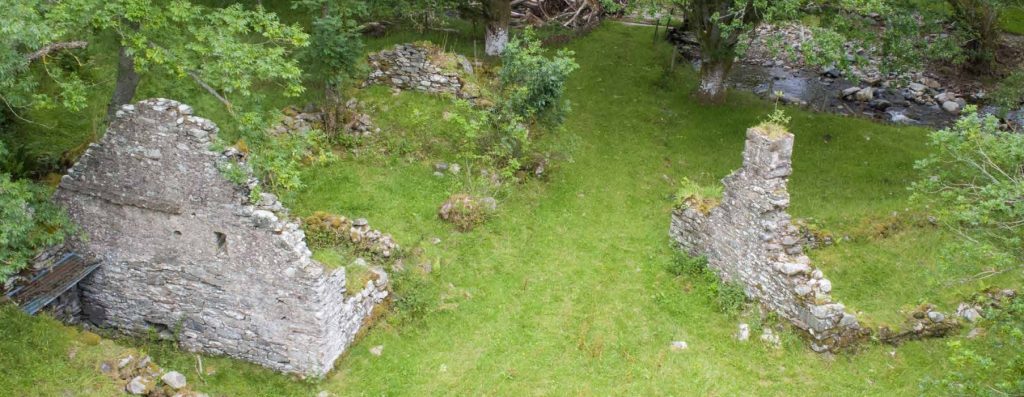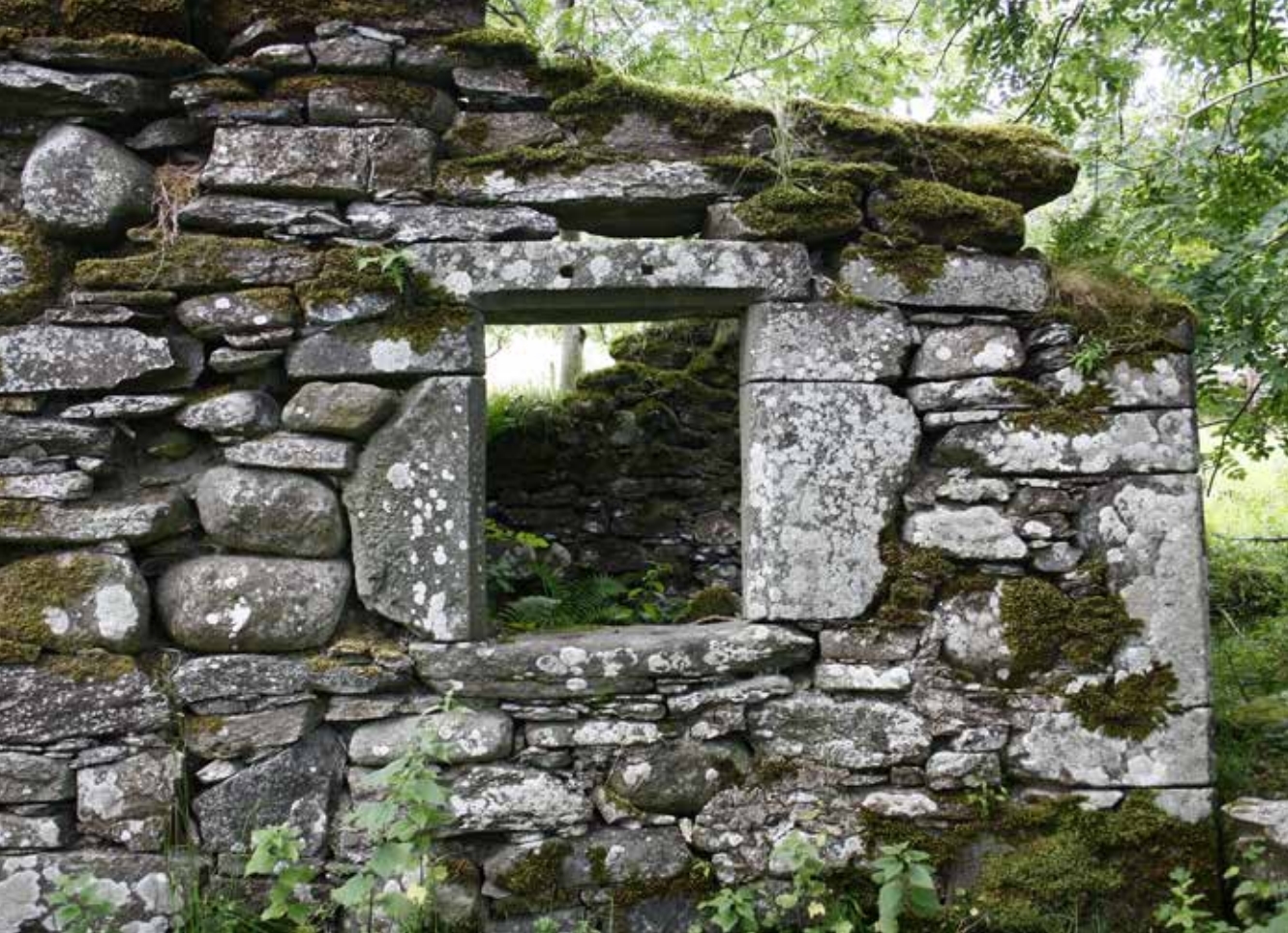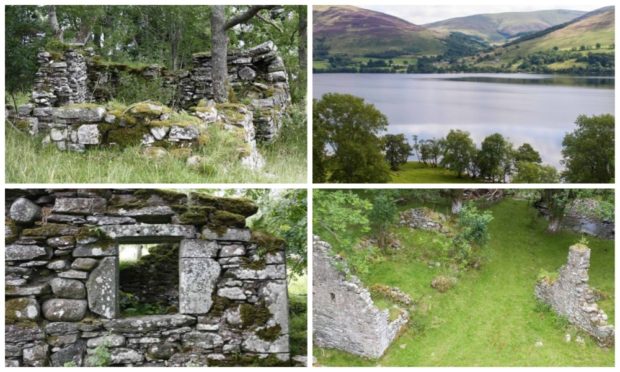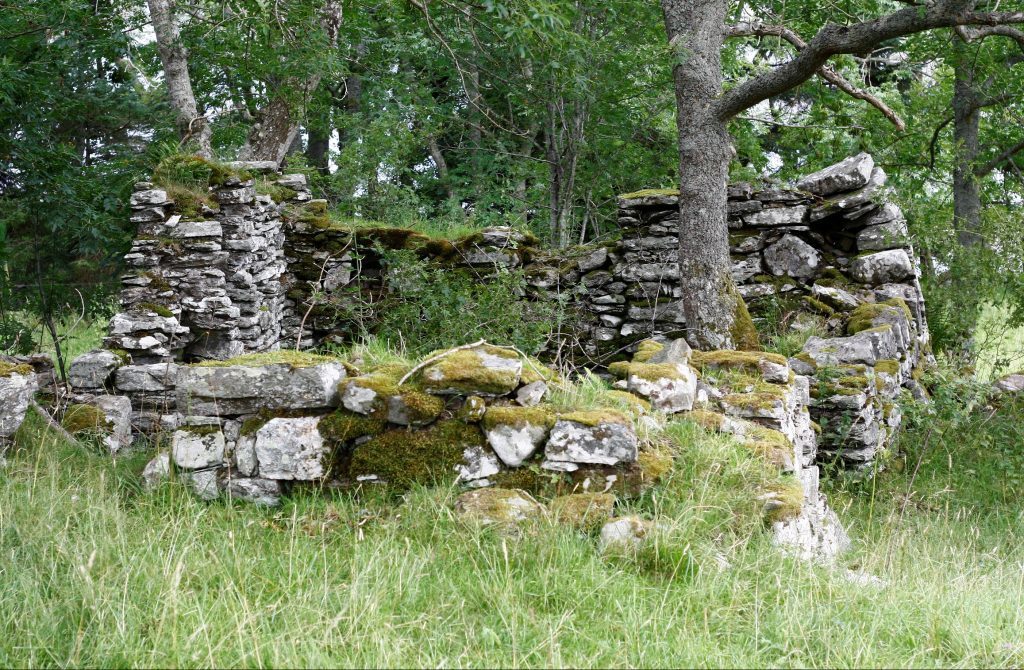An historic Highland Perthshire village could be saved from crumbling away under new plans.
The 17th century buildings in the village of Old Lawers, which is a scheduled ancient monument, have been in a state of decay for many years, prompting fears that they could be reduced “to a pile of stones”.
Now a new bid to revive the site, which was abandoned in the 19th century, has been made after Historic Environment Scotland (HES) requested work to be carried out on the remaining buildings.
HES has requested that the landowner remove trees which are encroaching on the buildings, which include a church and the Laird’s House.
A planning application for an “off grid” maintenance shed on the field at the centre of the village states that the work is vital to make the site more accessible to visitors.
The structure, which features a retractable decking area, would be used by workers engaged in saving the buildings.
A spokesman for the project said in the submitted paperwork: “The proposals have the potential to bring the Old Village of Lawers back into a state which can be more easily visited and retain its historic significance. The village is in a serious state of decay and without vital consolidation works will continue to collapse.

“The nature of these works require the siting of a hut such as proposed to enable workers to complete the proposals before the buildings completely degrade. The repair and consolidation work proposed relies on there being some secure form of site storage for tools and materials as well as somewhere to shelter from the weather when required.
“Without this the work can be difficult and possibly dangerous to carry out.”
The statement added that if Perth and Kinross Council were to refuse the application it could prove disastrous for the future of the village.
It said: “If consent for this site maintenance hut is not approved, the HES requested works will not happen and the potential stabilisation works which we envisage their structural survey will flag up will not happen.
“On this basis this SAM would inevitably degrade further. As well as being a health and safety risk, they would lose a lot of their character as gable end walls get blown down in storms due to lack of support from degraded mortar and as the surrounding supporting walls have already collapsed.”

In 2012 a bid to build a house in the middle of Old Lawers was turned down for the second time after objections from around the world.
An application was made for a one-and-a-half-storey building just 60 metres from the ruined village church, a B-listed building dating from 1669.
It would also have been in close proximity to the village graveyard. Objectors wrote from as far afield as Canada to protest at the “destruction” of the site.
The site was put on the market for offers over £100,000 in 2016.
Old Lawers lies on the northern shore of Loch Tay and acted as a ferry port for boats crossing the water.
The 1841 census suggests that there may have been 17 people living by the loch in the old village. By 1891 there were only seven people, all of whom lived in the pier master’s house which was abandoned in 1926.
The southern section of the original village contains the church, the laird’s house and a third unidentified building. The rest of the village and the graveyard lie north of the open grassy area.
It’s most notable connection is to a soothsayer, the Old Lady of Lawers, who predicted the coming of the railway and the construction of steam ships and is now thought to haunt the site.
The modern settlement now lies to the west of the original, in line with the A827.

A Lady of vision
The last occupant of the House of Lawers was Lady Lawers, who is remembered for various prophecies which some people believe came true.
She is thought to have been a Stewart of Appin, Argyll, and to have been the wife of one of the lairds of Lawers in the 17th century.
When she referred to ‘fire-coaches’ crossing the Drumochter Pass, she is said to have predicted the coming of the railway.
She is supposed to have planted an ash tree at the north end of the church and said that when it grew to the height of the little spire the church would fall.
In fact the church was damaged so badly in a thunderstorm in which the ash tree perished that it was never used again.
“A ship driven by smoke will sink in Loch Tay with great loss of life,” she said, long before the construction of steam ships, one of which did sink in the loch.
Perhaps unsurprisingly the site is said to be haunted to this day by a female, presumably Lady Lawers.











